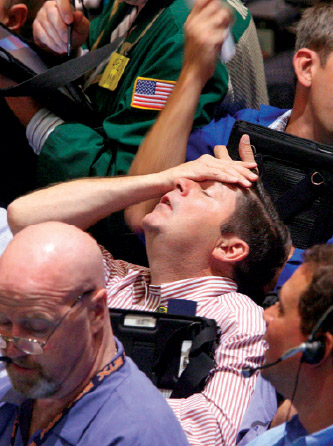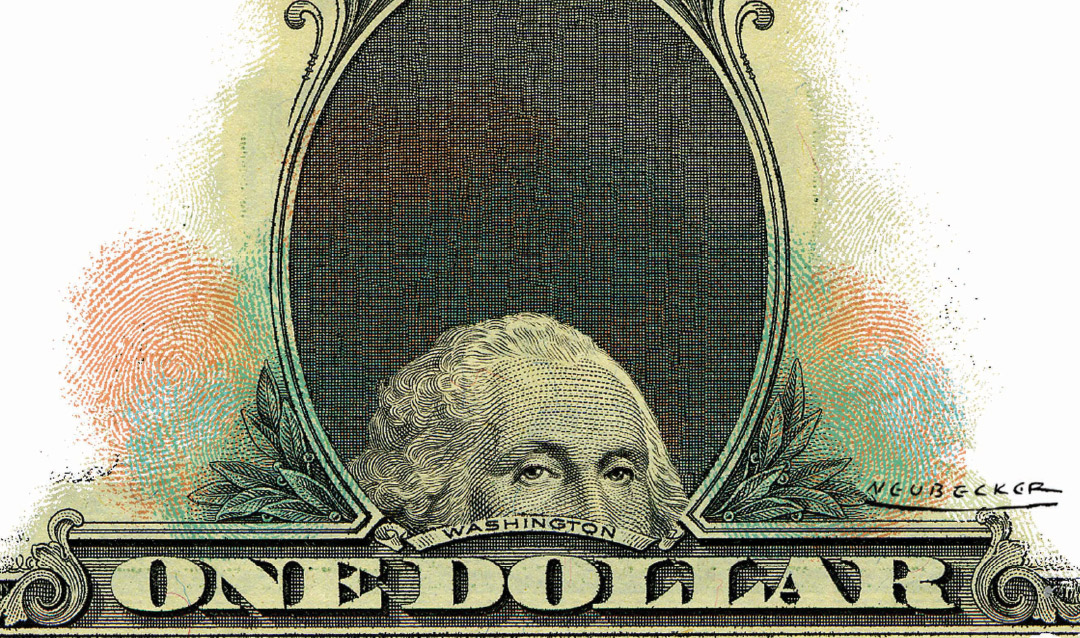Credit default swaps arrived in the financial world as an invention of investment bank J.P. Morgan in 1994. In the years that followed, these innovative credit derivatives soared in popularity, attracted trillions in investment worldwide—and, ultimately, became mostly infamous for the significant role they played in the 2008 global financial crisis.
Jae Bum Kim Finds Value in the Credit Default Swap
A study in the Journal of Accounting Research concluded that the “positive” seen in CDSs could be traced directly back to the sense of “insurance” they provide to lenders.

Credit default swaps (CDSs) played a large role in the collapse of Wall Street firms Bear Stearns and Lehman Brothers.
These complicated financial instruments essentially act as a form of insurance for lenders, who by purchasing credit default swaps (CDSs) can offset much of the risk associated with their lending activity. In a typical CDS agreement, a lending institution buys a CDS from the selling firm, and as part of that agreement is bound to pay the seller a fee, similar to an insurance premium. The seller of the CDS, in return, assumes a significant amount of the risk should the borrower of the debt held by the buyer default. For such storied Wall Street firms as Bear Stearns and Lehman Brothers, the crushing weight of that assumed debt proved lethal; both firms collapsed in 2008 in large part because of their obligations under credit default swaps.
Without question, then, CDSs carry risk—2008 proved that. And yet, for all the peril they may pose, their appeal endures, and for obvious reasons: They offer to lenders a hugely valued sense of long-term security—essentially, a hedge—that has continued to make them attractive despite tightened regulations post-2008. The total value of the CDS market, though small in comparison to the heady days before the global crash, still stands at nearly $10 trillion today, and so it seems the message from the market is clear: CDSs are here to stay.
To hear Jae Bum Kim tell it, that may not be a bad thing. In fact, for investors, he says, it may actually be a very good thing.
Kim, an assistant professor of accounting, has built a body of work focused on the determinants and consequences of decision-making related to corporate disclosures. The work, which has included examinations of everything from executive compensation and accounting rules to social media and corporate governance, is aimed at helping policy makers and regulators gain a fuller understanding of how regulatory changes and other reforms or innovations might impact the behavior of executives, directors, firm managers and investors.
Most recently, Kim turned his attention to CDSs, and what he believed to be a potential link between these oft-vilified credit derivatives and an actual positive downstream effect.
In a study published in the Journal of Accounting Research in collaboration with colleagues at the University of Southern California, the University of Minnesota and the University of Toronto, Kim concluded that the “positive” he saw in CDSs could be traced directly back to the sense of “insurance” they provide to lenders. Because these lenders feel “protected” when they purchase CDSs, prior studies found, they appear to be much less likely to be vigilant about monitoring borrowers. That in itself, of course, is not necessarily a positive; what is, however, is the behavior change that can be seen, in response, by institutional investors, Kim suggests.
In understanding lenders’ comparatively lax oversight when protected by CDSs, Kim says, investors have increasingly used their leverage to demand greater transparency from managers whose firms are linked to or named in CDSs. Kim and his colleagues found that managers of firms in these situations were 6.4 percent more likely to offer earnings forecasts and that the average forecast frequency of CDS firms is 35.6 percent higher than that of non-CDS firms, even when doing so isn’t compulsory.
This work, he says, holds an important lesson: When it comes to controversial financial innovations, their value cannot be judged on their potentially negative consequences alone.
“Some critics will say there is some negative impact by credit default swaps, of course,” Kim says. “But we feel there is some positive value as well. Largely, that’s tied to the fact that when they are present, the shareholders realize they need to step up and be more proactive.”
This story originally appeared as "Credit Where It's Due" in the 2019 Lehigh Research Review.





